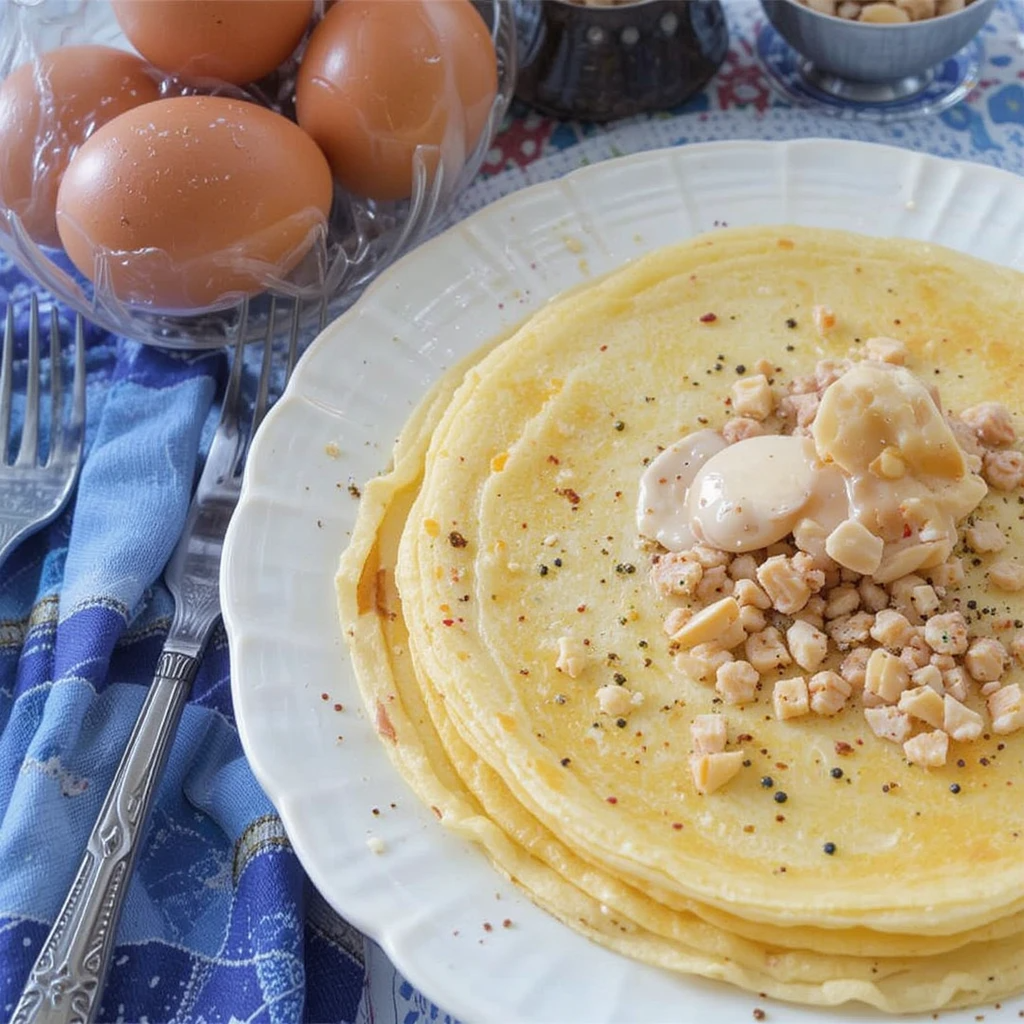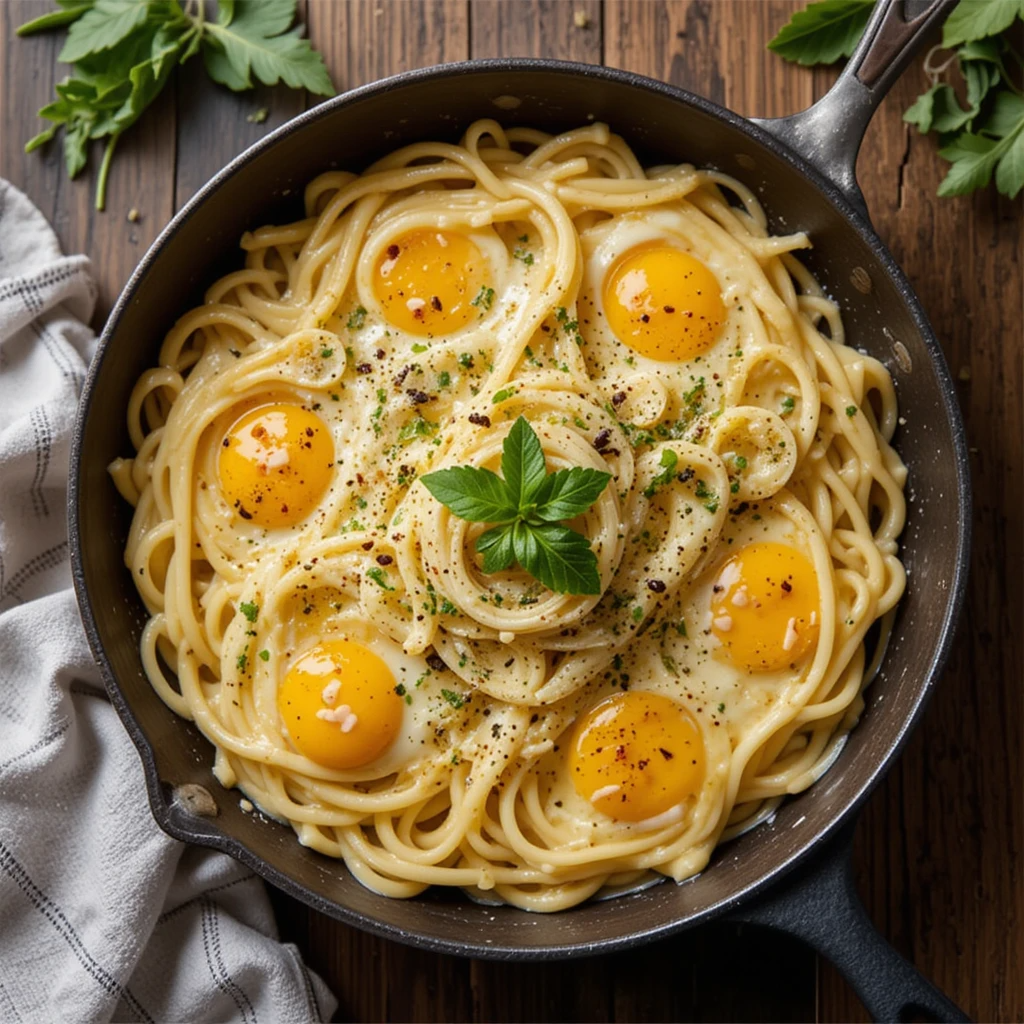The Classic Quiche Lorraine: A Journey Through History and Flavor (Using 5 Perfect Eggs)
Few dishes embody the elegance and comfort of French cuisine quite like the Quiche Lorraine. With its flaky, buttery crust and a rich, savory custard filling punctuated with smoky lardons, it’s a versatile masterpiece perfect for brunch, lunch, or a light dinner. However, the true classic is often misunderstood. This isn’t a dish loaded with cheese, onions, or vegetables. Its beauty lies in its stunning simplicity. In this comprehensive guide, we will delve into the history of this iconic tart, provide a definitive recipe that uses a precise number of eggs for the ideal custard, and share professional secrets to ensure your Quiche Lorraine is nothing short of perfection.
What is a True Quiche Lorraine? Debunking the Myths
Originating from the Lorraine region of France, the quiche began its life in the late Middle Ages as a simple, hearty dish for German Lotharingian kings. The word ‘quiche’ itself is derived from the German ‘kuchen,’ meaning cake. The original version was essentially a rustic tart filled with a mixture of eggs and cream.
A true Quiche Lorraine, as defined by purists and culinary legends like Auguste Escoffier, contains only a shortcrust pastry (pâte brisée), a custard of eggs and cream, and smoked bacon or lardons. There is no cheese. The addition of Gruyère or Emmental, while delicious, creates a Quiche aux Lardons or Quiche Vosgienne. Similarly, onions are not a traditional ingredient. The magic of the classic recipe is how the profound, smoky flavor of the bacon infuses the delicate custard, creating a harmonious balance that needs no embellishment.
The Golden Ratio: Why 5 Eggs Are the Secret to Perfection
The soul of any quiche is its custard. This is where the egg count becomes critical. The number of eggs acts as the primary thickening agent, determining the quiche’s final texture.
- Too few eggs (e.g., 3-4): The custard will be loose, watery, and may not set properly, leading to a soggy crust and a filling that falls apart when sliced.
- Too many eggs (e.g., 6-7): The custard becomes overly firm and rubbery, resembling a baked omelette rather than a delicate, silken filling.
Five large eggs strike the perfect balance. For a standard 9-inch tart pan, five eggs combined with high-quality heavy cream (a typical ratio is 1 part egg to 2 parts liquid) yield a custard that is:
- Structurally sound: It slices cleanly without collapsing.
- Luxuriously creamy: It melts in your mouth with a smooth, tender texture.
- Perfectly set: It remains jiggly, not liquid, in the center when removed from the oven, allowing carryover cooking to finish the job without curdling.
A Step-by-Step Guide to the Perfect Quiche Lorraine
Total Time: 1 hour 30 minutes (plus chilling time) | Serves: 6-8
Ingredients:
- For the Pastry:
- 1 ¼ cups all-purpose flour
- ½ teaspoon salt
- ½ cup cold unsalted butter, cubed
- 3-4 tablespoons ice water
- For the Filling:
- 200g (7 oz) thick-cut smoked bacon or lardons
- 5 large eggs, at room temperature
- 1 ¼ cups heavy cream (or half cream, half whole milk)
- ½ teaspoon freshly ground black pepper
- Pinch of freshly grated nutmeg
- Salt (use cautiously as the bacon is salty)
Instructions:
Preparing Your Savory Shortcrust Pastry
- In a food processor, pulse the flour and salt. Add the cold, cubed butter and pulse until the mixture resembles coarse breadcrumbs.
- Gradually add ice water, one tablespoon at a time, pulsing until the dough just begins to clump together.
- Turn the dough out onto a surface, gently form it into a disc, wrap in plastic, and refrigerate for at least 1 hour.
- On a floured surface, roll the dough out to a 12-inch circle. Carefully press it into a 9-inch tart pan with a removable bottom. Trim any excess dough. Prick the base all over with a fork and chill for another 30 minutes.
The Art of the Filling: Bacon, Custard, and Nothing More
- While the pastry chills, cook the bacon in a skillet over medium heat until crispy. Drain on paper towels to remove excess grease.
- In a large bowl, whisk the 5 eggs until smooth. Gradually whisk in the cream (and milk if using). Season with pepper and nutmeg. Do not add salt yet.
Blind Baking: The Non-Negotiable Step for a Crispy Crust
- Preheat oven to 375°F (190°C).
- Line the chilled pastry shell with parchment paper and fill with pie weights or dried beans.
- Bake for 15 minutes. Remove the weights and parchment and bake for another 5-7 minutes until the crust is pale golden and dry to the touch.
Combining and Baking to Golden Perfection
- Sprinkle the cooked bacon evenly over the pre-baked crust.
- Give the custard mixture a final whisk and carefully pour it over the bacon.
- Place the quiche on a baking sheet and bake for 30-35 minutes. The edges should be fully set and puffed, while the center should still have a slight jiggle.
- Let the quiche cool in the pan on a wire rack for at least 20 minutes before removing the ring and slicing. This resting time is crucial for the custard to set fully.
Expert Troubleshooting: Avoiding a Soggy Bottom and Curdled Custard
- Soggy Bottom: This is caused by a wet filling meeting an unbaked crust. Blind baking is your best defense. Ensuring your crust is properly chilled and pricked before baking also prevents it from shrinking and blistering.
- Curdled Custard: Curdling happens when the eggs are overcooked. To prevent this, bake until just set but still jiggly, and remember that residual heat will continue to cook the quiche as it cools. Using room temperature eggs instead of cold ones helps them blend more smoothly with the cream and cook more evenly.
Beyond the Classic: Inspired Variations to Try
Once you’ve mastered the classic, feel free to explore! Remember, these are variations, not the traditional Lorraine.
- Quiche aux Poireaux (Leek): Sauté finely sliced leeks until soft and sweet before adding.
- Quiche aux Champignons (Mushroom): Add sautéed wild mushrooms and a handful of Gruyère cheese.
- Quiche Florentine: Incorporate blanched, squeezed-dry spinach and a touch of nutmeg.
Conclusion: A Timeless Classic for Any Table
The Classic Quiche Lorraine is more than a recipe; it’s a lesson in restraint and technique. By honoring its history, respecting the golden ratio of five eggs to cream, and mastering the pastry, you can create a dish that is both simple and profoundly satisfying. It’s a testament to the fact that the finest flavors often come from the purest ingredients, prepared with care and understanding. So, preheat your oven, roll out your pastry, and prepare to bake a piece of French culinary history. Bon appétit!



